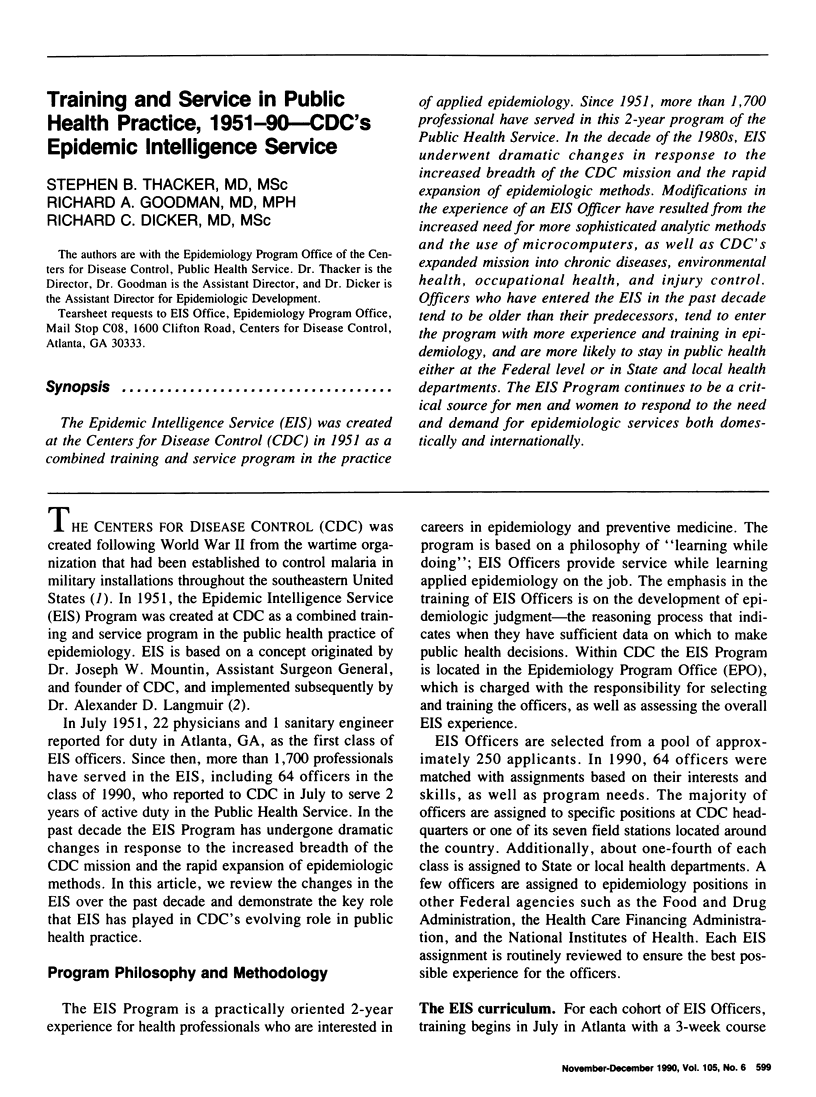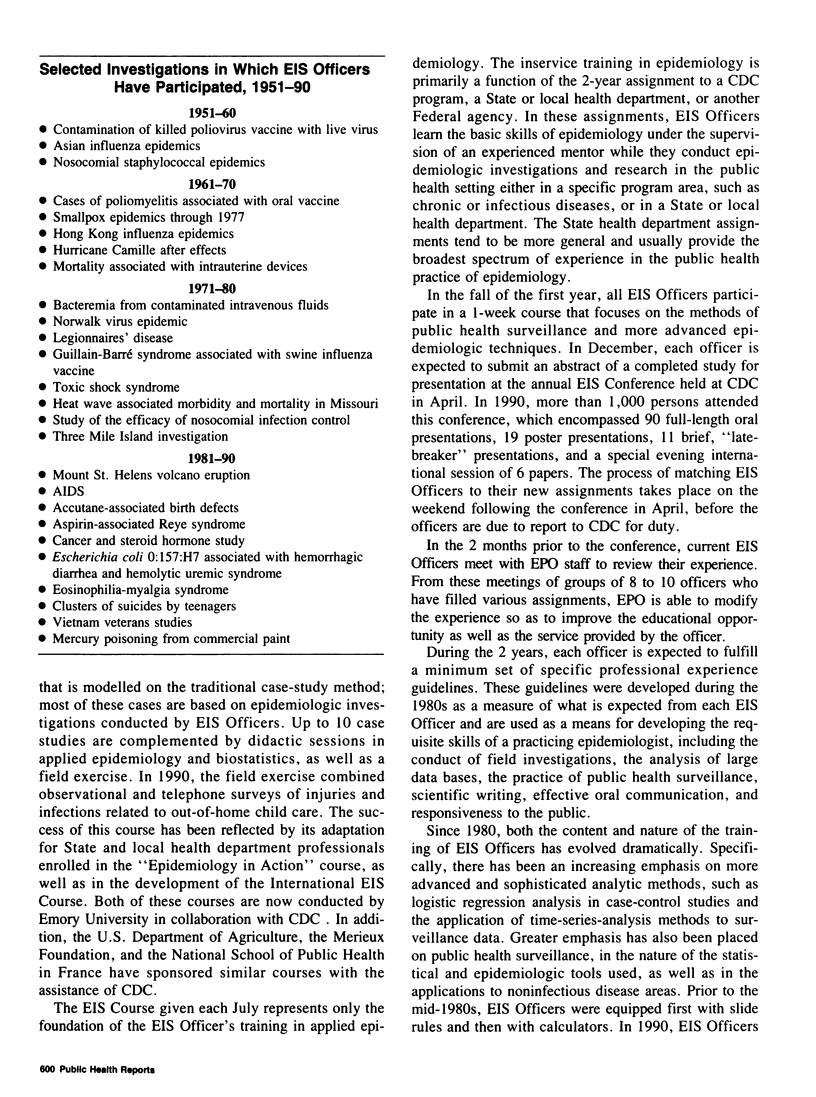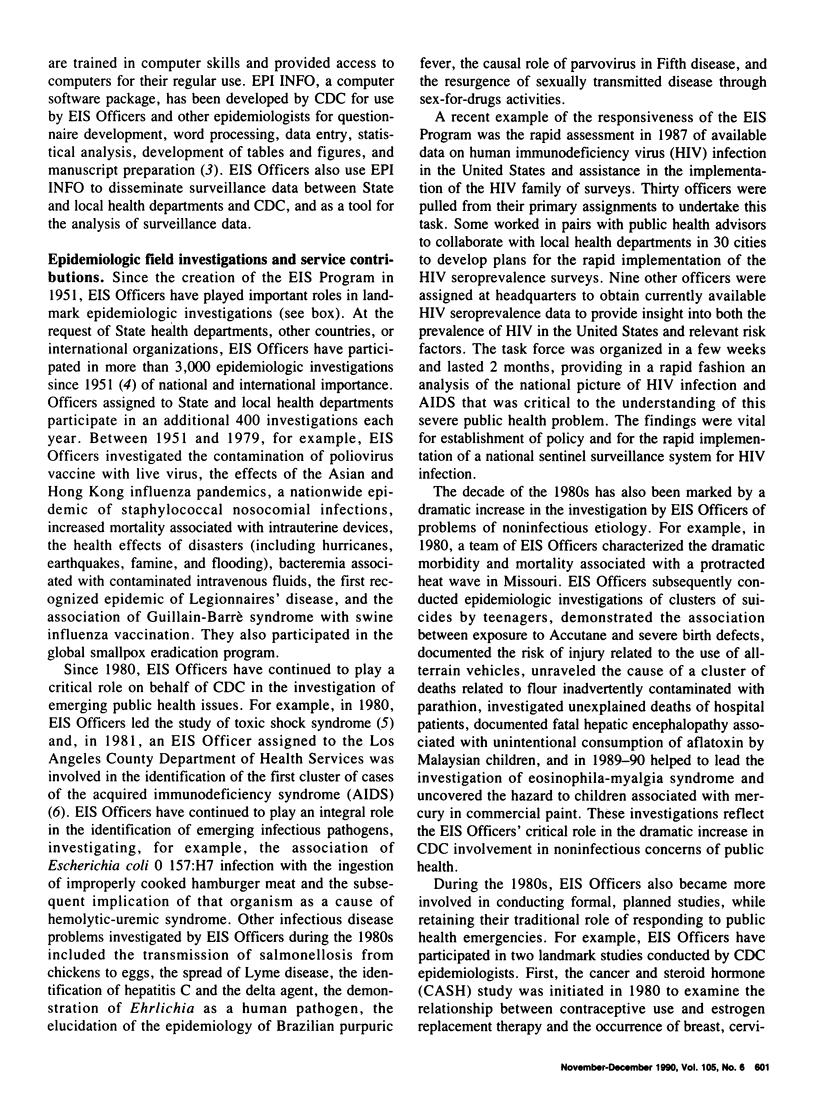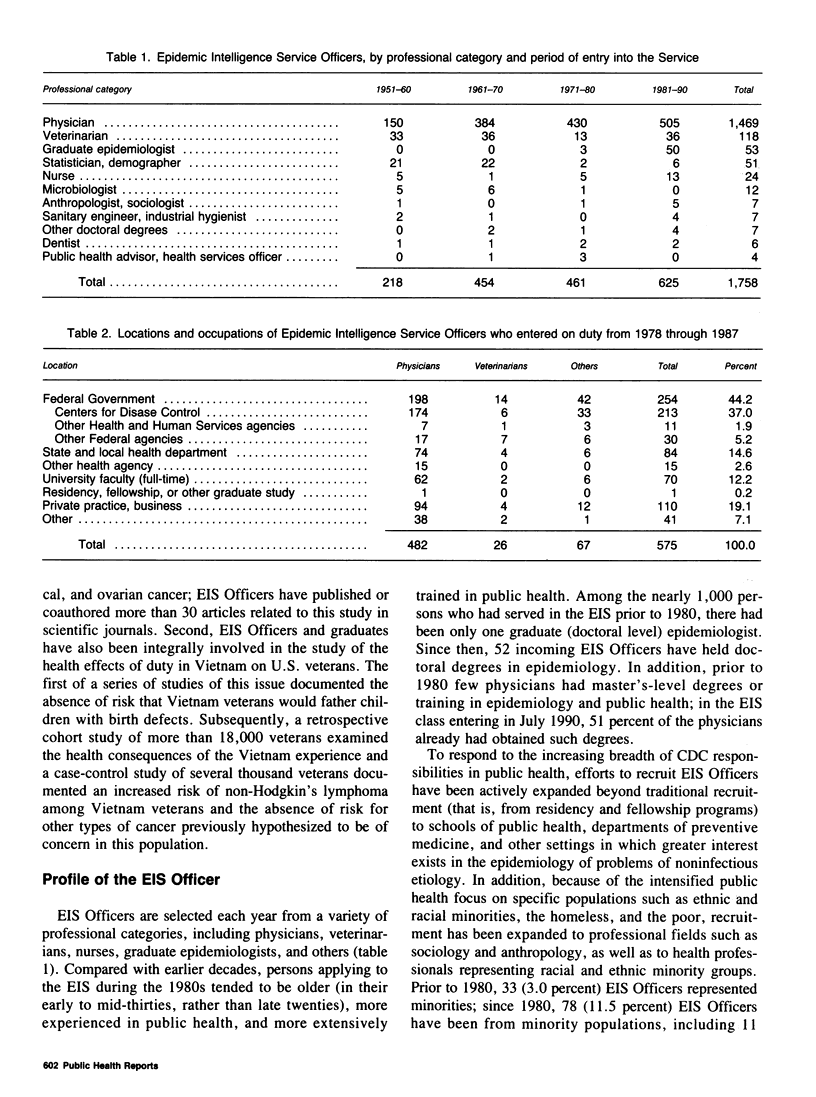Abstract
The Epidemic Intelligence Service (EIS) was created at the Centers for Disease Control (CDC) in 1951 as a combined training and service program in the practice of applied epidemiology. Since 1951, more than 1,700 professional have served in this 2-year program of the Public Health Service. In the decade of the 1980s, EIS underwent dramatic changes in response to the increased breadth of the CDC mission and the rapid expansion of epidemiologic methods. Modifications in the experience of an EIS Officer have resulted from the increased need for more sophisticated analytic methods and the use of microcomputers, as well as CDC's expanded mission into chronic diseases, environmental health, occupational health, and injury control. Officers who have entered the EIS in the past decade tend to be older than their predecessors, tend to enter the program with more experience and training in epidemiology, and are more likely to stay in public health either at the Federal level or in State and local health departments. The EIS Program continues to be a critical source for men and women to respond to the need and demand for epidemiologic services both domestically and internationally.
Full text
PDF





Selected References
These references are in PubMed. This may not be the complete list of references from this article.
- Foege W. H. Centers for Disease Control. J Public Health Policy. 1981 Mar;2(1):8–18. [PubMed] [Google Scholar]
- Goodman R. A., Bauman C. F., Gregg M. B., Videtto J. F., Stroup D. F., Chalmers N. P. Epidemiologic field investigations by the Centers for Disease control and Epidemic Intelligence Service, 1946-87. Public Health Rep. 1990 Nov-Dec;105(6):604–610. [PMC free article] [PubMed] [Google Scholar]
- Gunn R. A., White M. C., Miller G. B., Jr, Conrad J. L., Tyler C. W., Jr State epidemiology programs and state epidemiologists: results of a national survey. Public Health Rep. 1989 Mar-Apr;104(2):170–177. [PMC free article] [PubMed] [Google Scholar]
- Langmuir A. D. The Epidemic Intelligence Service of the Center for Disease Control. Public Health Rep. 1980 Sep-Oct;95(5):470–477. [PMC free article] [PubMed] [Google Scholar]
- Music S. I., Schultz M. G. Field epidemiology training programs. New international health resources. JAMA. 1990 Jun 27;263(24):3309–3311. [PubMed] [Google Scholar]
- Shands K. N., Schmid G. P., Dan B. B., Blum D., Guidotti R. J., Hargrett N. T., Anderson R. L., Hill D. L., Broome C. V., Band J. D. Toxic-shock syndrome in menstruating women: association with tampon use and Staphylococcus aureus and clinical features in 52 cases. N Engl J Med. 1980 Dec 18;303(25):1436–1442. doi: 10.1056/NEJM198012183032502. [DOI] [PubMed] [Google Scholar]
- Williams S. J., Tyler C. W., Jr, Clark L., Coleman L., Curran P. Epidemiologists in the United States: an assessment of the current supply and the anticipated need. Am J Prev Med. 1988 Jul-Aug;4(4):231–238. [PubMed] [Google Scholar]


